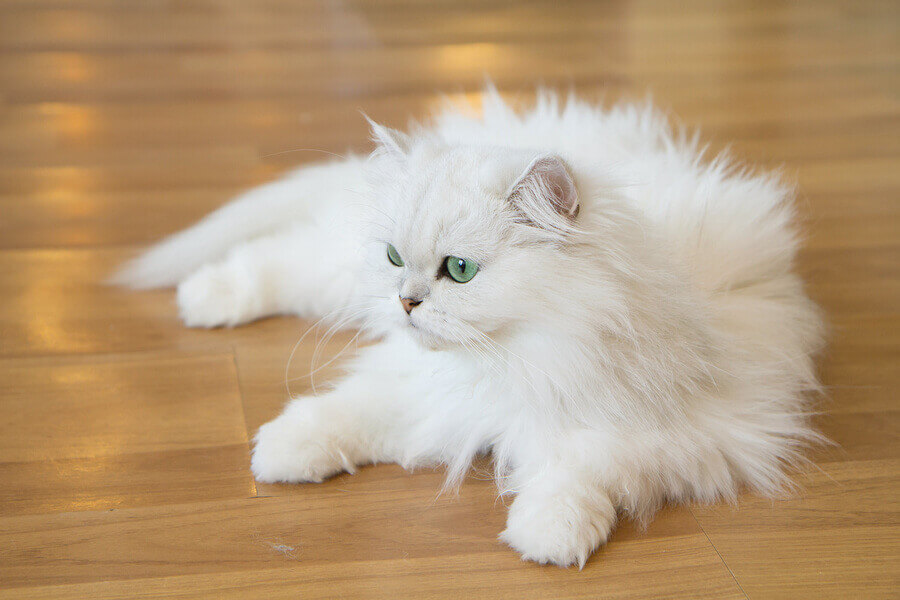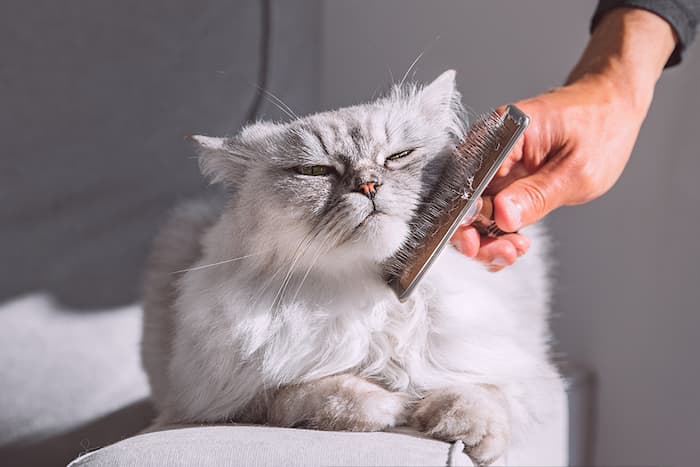The Persian is a docile, quiet, and affectionate cat. It tends to be a lap cat. Like the British Shorthair, it is a “four square” cat that prefers to stay on the ground. It therefore won’t go exploring bookshelves or the like. While they like children, they don’t enjoy roughhousing or boisterous games.
How much does a Persian cat cost? $1,800 to $3,000
How much attention does a Persian need?
Persians have the longest fur of all domestic cats. They, therefore, need to be groomed every day to keep their coat from getting matted and to prevent hairballs. Persians should also be periodically bathed. If the owner starts bathing the Persian while they are still a kitten, the cat soon learns to enjoy it. After the bath, the owner should gently comb the Persian while blow-drying them. Persians have large eyes that can attract irritants that make them run, so the owner will have to wipe their eyes every day.
Does a Persian have specific dietary needs?
A Persian’s flat face can make eating difficult, so it will need cat food designed to accommodate it. There are dry cat foods with special shapes that enable the cat to grasp it with its tongue. Since Persians can be prone to hairballs, they will also need food with lots of fiber in it to promote digestion and reduce hairballs.
What are the most common health issues of the breed?
There are two types of Persian: the traditional or doll-faced Persian and the Extreme or Peke-faced. The latter has more health problems because of its flattened face that can affect the cat’s teeth and eyes. Peke-faced Persians are also prone to eating and breathing problems. Some lines of Persians are also prone to heart problems, hip dysplasia, and Polycystic Kidney Disease (PKD). At one point, PKD affected about 1/3 of the Persians and Exotics in England; genetic testing has reduced that number.
More Cat Breeds


